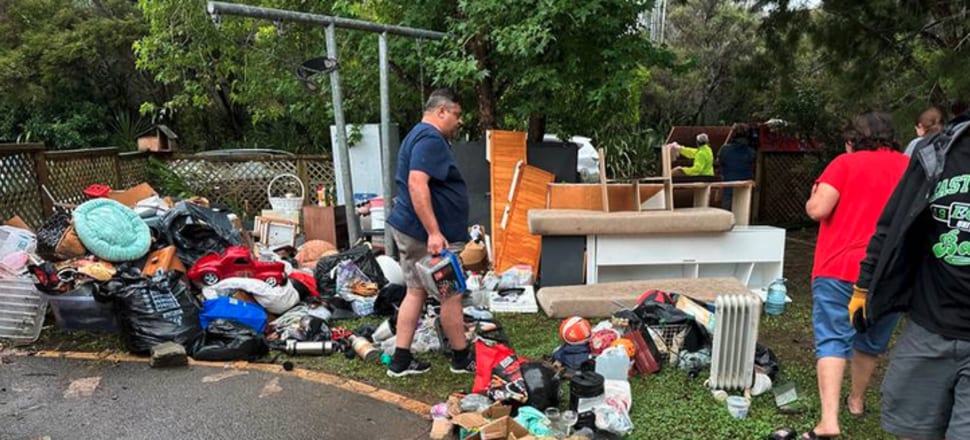
In these threatening times, a broad discussion about the role of EQC is imperative, writes Chris Nicoll
In Aotearoa we are good at dealing with catastrophes when they occur. We see (otherwise rare) social unity in the minute-by-minute responses. People seem happy to help one another without hope of reward or recognition, political and socio-economic barriers are forgotten, acts of individual heroism are not uncommon.
But once released from the agony of the moment, the threat recedes in our memories and other more immediate problems take priority; leaving those most directly affected to suffer the mental and physical aftermath. We in New Zealand are not alone in this. It is a worldwide and well-documented phenomenon: we humans prefer to avoid long-term thinking and planning.
READ MORE: * Why the north and east have had such a dreadful summer * The Auckland floods are a sign of things to come * EQC isn’t Canterbury’s problem, it’s everyone’s
This is sad for at least two reasons. The flooding experienced in the Tāmaki Makaurau conurbation and in vulnerable coastal areas such as Tairāwhiti will happen again even if carbon emission goals are achieved. If they are not achieved their severity and/or frequency will increase. The second reason relates to financial and mental cost. Early preparation for flood events, including steps to lessen losses after an event, is hugely effective. This comes with an important qualification. We should not waste money on delaying the inevitable. Care must be taken to weigh mitigation expense against the useful lifespan of the property concerned.
A recent Australian report says that almost all money spent on natural disasters in that country goes to the recovery phase. Only three percent is spent on preparation and mitigation. It is estimated that money spent on natural disaster preparedness (including action to reduce greenhouse gases) could save A$380 billion in gross domestic product over the next 30 years. In the United States federal grants are available to assist preparedness. For every US dollar spent on such grants, there is, on average, a saving in recovery costs of US$6. This is probably conservative because the reduction in domestic violence and the preservation of community and culture, among other things, are left out of the calculation because they are so hard to quantify.
We are fortunate in Aotearoa to have the Earthquake Commission (EQC). It and its previous incarnations have cushioned citizens against a variety of natural disasters for over 70 years. If the Natural Hazards Insurance Bill becomes law its name will change to Toka Tū Ake – Natural Hazards Commission and it will have more clearly defined functions in the areas of education and research. This will assist with natural hazard preparedness, but it remains to be seen what practical steps it will be allowed to take and, if allowed, what it will choose to do to realise the benefits of long-term thinking.
A further key challenge is to reach a clear understanding, informed by public debate, about what we expect of EQC and, that done, are our expectations realistic? In short, what level of protection can the country afford? This would involve, among other things, examining the role, if any, of the local insurance market and the international re-insurance market.
The performance of EQC was reviewed following the Canterbury Earthquake sequence of 2010 and 2011. This began a process resulting in the Natural Hazards Insurance Bill. However, it was intended to modernise the existing Earthquake Commission Act and embed lessons learned from Canterbury. It was not intended to be “a first-principles examination of the purposes and design of EQC”.
As far back as 1980 the Commission of Enquiry into the Abbotsford Landslip Disaster (a major landslide in Abbotsford, Dunedin, that occurred on the night of 8 August 1979, the largest landslip to have then occurred in an urban area in New Zealand) observed the piecemeal way in which the legislation had grown. With the re-occurring flooding in Tairāwhiti and the unprecedented flood in Auckland, now is the time to have a first-principles examination of EQC. The undoubted challenge of climate change adds a new dimension, making a succession of legislative add-ons inappropriate and, ultimately, an impediment to innovative response.
For example, history reveals uncertainty about something as critical as the Earthquake Commission’s philosophical basis. It started life in 1941 to cushion against war damage, a catalyst for similar state entities in other countries such as Spain. Even then it was anticipated it would extend to other disasters such as earthquakes. It was an unashamed expression of social security or ‘solidarity’ guaranteed by the state and extending to commercial and residential property. French and other state entities were similarly based.
In subsequent years, EQC battled with Treasury to protect its accumulated funds and lessen taxpayer exposure (given the liabilities of EQC have consistently been guaranteed by the state). When it became clear the fund was insufficient to cover projected liabilities, commercial cover was removed in 1994 and residential caps introduced. But prior to that, two reports were commissioned, through Treasury, from international insurance brokers. Based firmly on the philosophy of neo-liberalism, these were aligned towards free-market forces and away from the solidarity principle. They paid scant attention to the right of the free market to drop cover when the risk gets too high and to the possibility an insurer will fail if its portfolio is concentrated in an area of major disruption such as Canterbury.
Public debate on the shift in philosophy has been stifled by narrowly drawn criteria but some would say, particularly in these threatening times, a wider discussion is imperative. This may or may not involve the market, it may combine the best of each, but a clear course should be plotted as soon as possible.







